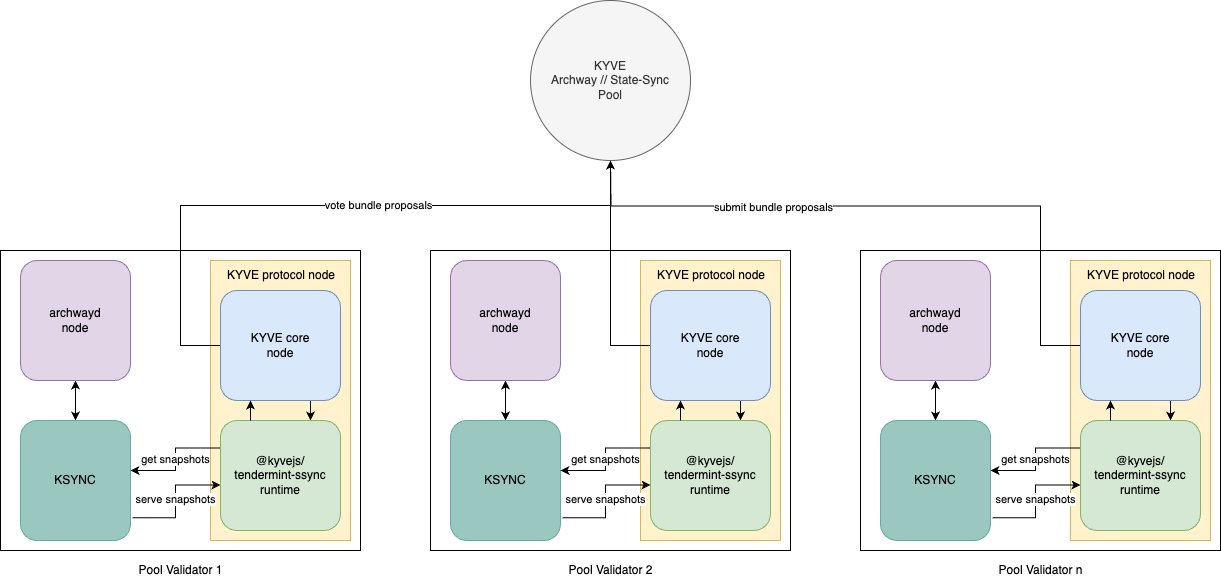Introduction
This data pool validates and archives state-sync snapshots from Archway and makes them permanently available with Arweave and Bundlr.
Overview
- Runtime: @kyvejs/tendermint-ssync
- Data Source: KSYNC (over serve-snapshots)
- Data: state-sync snapshots every 3,000 blocks from genesis ongoing
- Storage Provider: Bundlr
- Networks
- Min Hardware Requirements
- 4 or more physical CPU cores
- 32 GB RAM
- 150 GB DISK
- 100mbps network bandwidth
General Setup
If you want to participate in the Archway // State-Sync pool you will have to run KSYNC with a set up Archway node which will act as the data source for the KYVE protocol validator.
This is required because KSYNC enables the requesting of deterministic state-sync snapshots in order to validate and archive them. Therefore, KSYNC is using already validated Archway data of the Archway Mainnet pool to feed the node with blocks and serves the created snapshots through an implemented server. With that setup, a user who wants to join this pool first has to sync his Archway node with KSYNC to the current height of the latest created snapshot and then start the actual KYVE protocol validator.
This architecture diagram summarizes the setup of the Archway // State-Sync integration on KYVE:

Here, the tendermint-ssync runtime is responsible for communicating with KSYNC, and forwarding the data to the KYVE core protocol. The KYVE core then handles the communication with the pool. This entire process (yellow) is the KYVE protocol validator. The resulting data are the state-sync snapshots from the tendermint application - validated and permanently stored on a storage provider like Arweave.
Goal
The goal of this pool is to validate and archive state-sync snapshots from Archway permanently and decentralized. With this data, we want to make it possible for other nodes to state-sync the data from KYVE, making expensive archival nodes on Archway obsolete in the long run. More information on how to perform state-sync with KYVE visit the documentation about KSYNC here.